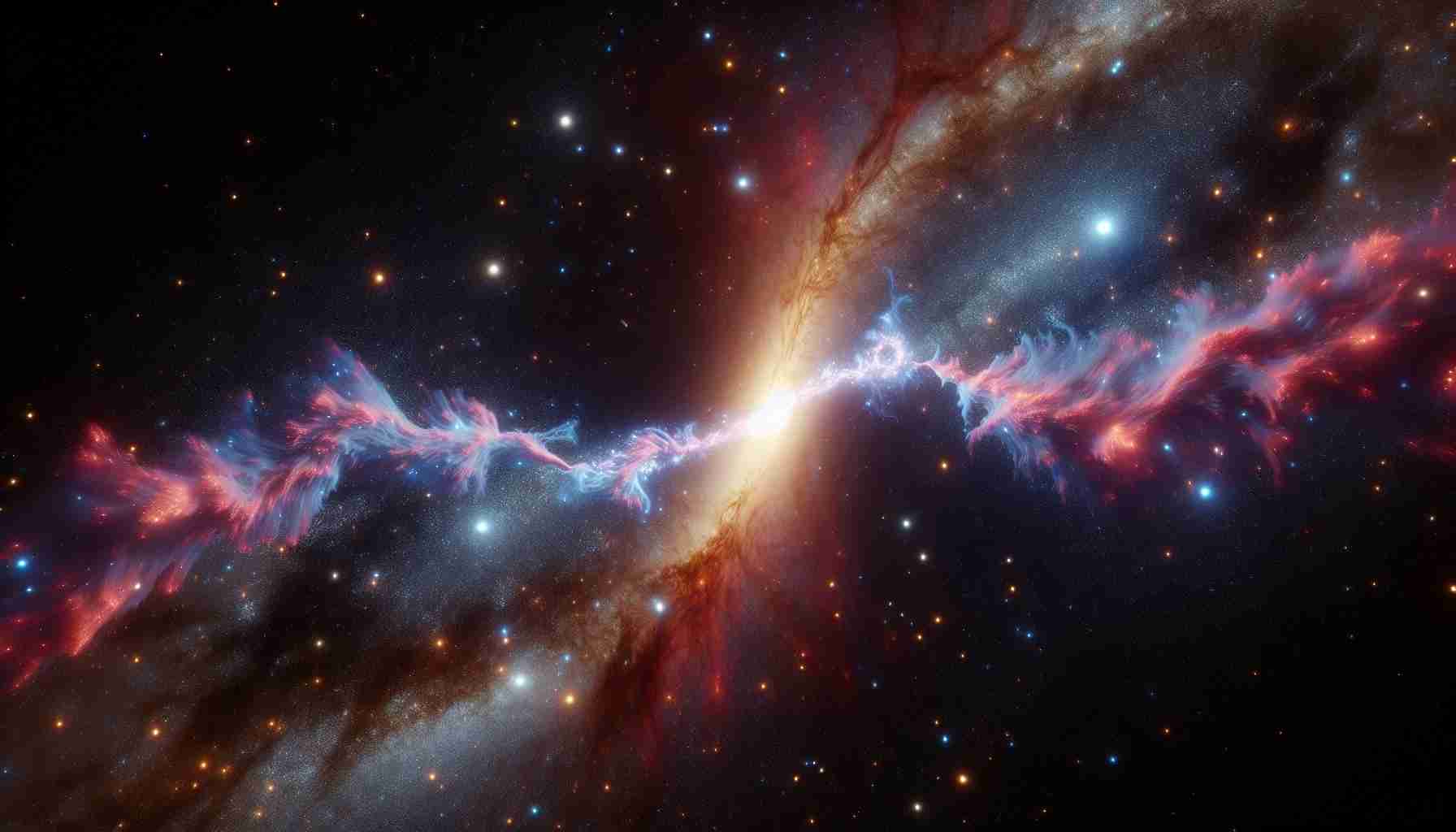Recent observations from the Hubble Space Telescope unveil the intricate relationship between our Milky Way galaxy and the nearby Large Magellanic Cloud (LMC), a fascinating dwarf galaxy situated approximately 160,000 light-years away. While this distance seems vast, the LMC occupies a significant portion of the Southern Hemisphere’s night sky.
Unlike many galaxies that gracefully orbit their larger counterparts, the LMC appears to be on a fleeting trajectory past the Milky Way, intensifying the scrutiny of astronomers. Researchers speculate that the LMC has recently encountered the gravitational embrace of our Milky Way, resulting in a drastic reduction of its gaseous halo, which currently spans just 50,000 light-years—a size much smaller than anticipated for a galaxy of its mass.
Utilizing the brilliance of 28 distant quasars, astronomers delved into the ultraviolet light data collected by Hubble, observing how it interacted with the LMC’s surrounding gas. This interaction revealed that the mighty gravitational forces at play act like a cosmic force, stripping away precious gas and affecting the galaxy’s ability to form new stars.
Despite this loss, the LMC remains resilient. Its remaining gas reserves are still sufficient to foster new star formation, indicating that this dwarf galaxy, having weathered cosmic trials, continues to thrive. The complex dynamic between the Milky Way and the LMC serves as a reminder of the ever-evolving nature of our universe, where galaxies interact in profound ways that shape their destinies. Further studies aim to deepen our understanding of this remarkable cosmic event.
FAQ Section
1. What is the Large Magellanic Cloud (LMC)?
The Large Magellanic Cloud (LMC) is a dwarf galaxy located approximately 160,000 light-years away from the Milky Way. It is notable for its visibility in the Southern Hemisphere’s night sky.
2. How does the LMC interact with the Milky Way?
Recent observations suggest that the LMC is on a trajectory past the Milky Way rather than orbiting it. Researchers believe that the Milky Way’s gravitational forces have recently affected the LMC, leading to a significant reduction in its gaseous halo.
3. What impact does this interaction have on the LMC’s gas reserves?
The gravitational pull from the Milky Way appears to strip away some of the LMC’s gas, reducing its gaseous halo to about 50,000 light-years. Despite this loss, the LMC still possesses enough gas to support ongoing star formation.
4. What methods did astronomers use to study the LMC?
Astronomers utilized data from 28 distant quasars along with ultraviolet light observations captured by the Hubble Space Telescope. This data provided insights into the interactions between the LMC and its surrounding gas.
5. Why is the study of the LMC important?
Studying the LMC offers valuable insights into the complex dynamic between galaxies, highlighting how interactions can influence their structure and ability to form new stars. It also contributes to our broader understanding of cosmic events and the evolution of galaxies.
Key Terms
– Dwarf Galaxy: A small galaxy composed of up to one billion stars, which is significantly fewer than larger galaxies like the Milky Way.
– Ultraviolet Light: A type of electromagnetic radiation with a wavelength shorter than that of visible light, important for studying hot, young stars and the gas around galaxies.
– Quasar: A highly luminous and active galactic nucleus, powered by a supermassive black hole, emitting enormous energy and often used in astronomical studies to probe the universe.
Related Links
Hubble Site
NASA
Space Telescope Science Institute
